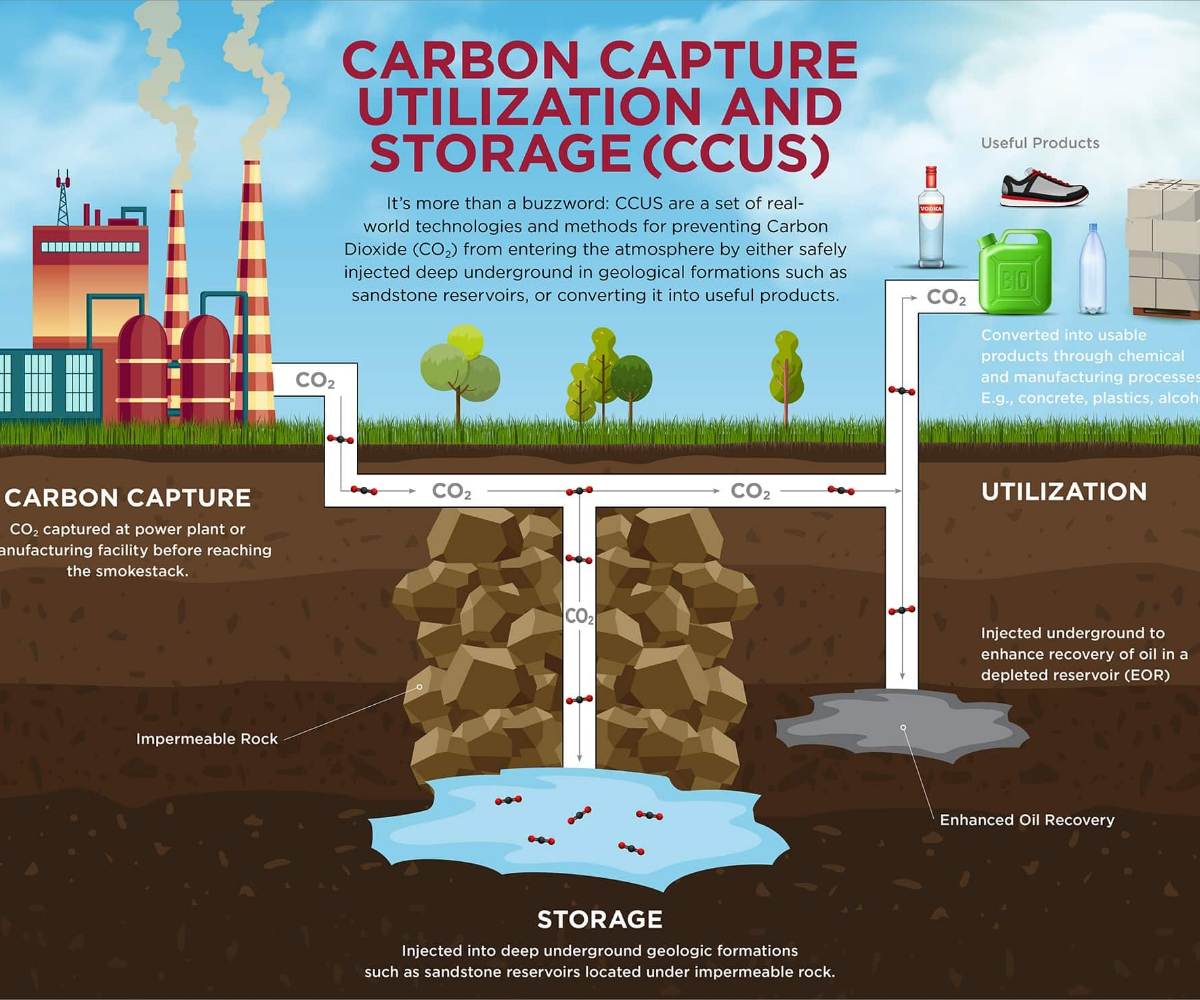In order to reduce the net CO2 emissions to the atmosphere, the CO2 can be captured via post-combustion carbon capture by MEA, hot potassium carbonate and Metal-Organic Frameworks (MOFs). When CO2 is captured within one of the WtV technologies after compression and drying it is transported to be:
- utilised for artificial fertilisation of crops in greenhouse horticulture
- injected into deep geological formations (including depleted oil and gas reservoirs or saline formations) which traps the CO2 for permanent storage
- utilised for feedstock to an urea plant
- utilised to treat and stabilise thermal residues (bottom ashes, boiler ashes, fly ashes, flue gas treatment air pollution control residues, drosses from slags, mineral by-product), and in turn valorise them into manufactured limestone (calcium carbonate) aggregate
The whole process is called CCUS. The amount of CO2 captured for utilisation is based on an installation that operates only during the summertime, when greenhouse CO2 demand is high.

The CCUS and CCUS hybrid variants operate year-round, where the hybrid variant stores any excess CO2 that is not utilised. CO2 Capture of 90% is considered for the calculation and 55% of the captured CO2 is used for utilisation while 45% of the captured CO2 is sequestered. Due to the energy required for CCS and CCU and the associated CO2 emission, the avoided CO2 for CCS and CCU are respectively 76% and 56% of the captured CO2.